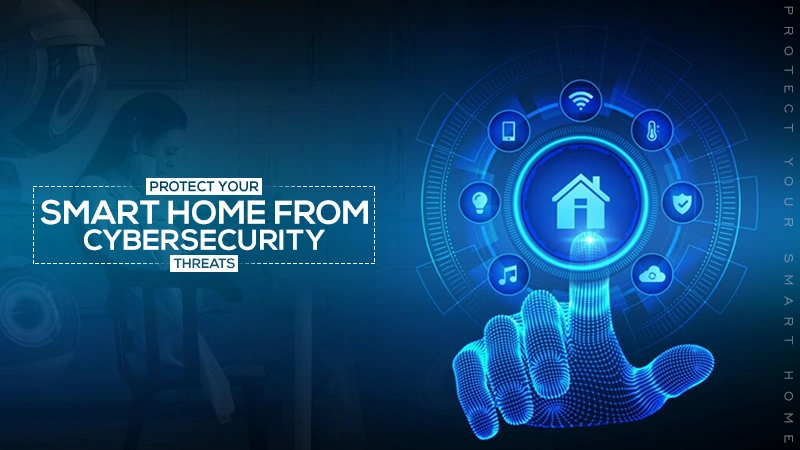
With everything going digital, smart homes are becoming a new and innovative trend, thanks to the advancing technology and potent electrical services. It allows you to control all appliances, from television sets, to air conditioners and even lights, from a single device connected to the internet. This further enables you to conveniently work around the space, without having to get up.
However, despite being an innovative thing, it has a lot of cybersecurity threats that might make you wonder how can you foolproof your home systems even better.
According to a 2023 report, 60% of smart home device users have experienced some form of cyber threat, such as hacking or unauthorized access, highlighting the vulnerability of these devices.
Worry not, as we have mentioned some of the essential ways that will allow you to secure your personal space from cybersecurity threats.
| TABLE OF CONTENTS 1. Regularly Update the Device’s Software 2. Get Rid of Outdated Routers 3. Frequently Change the Default Passwords 4. Ensure Your WiFi Network is Secure 5. Keep an Eye on Network Activity 6. Make Use of Firewalls 7. Enable Two-Factor Authentication 8. Divide the Entire Network 9. Make Everyone Know Ins & Outs 10. Disable the Unused Features 11. General Vulnerabilities of Smart Home Systems 12. Wrapping Up |
It’s always beneficial to keep a check on the device’s software at frequent intervals, as outdated software can lead your smart home to become an easier target for cybersecurity threats.
A survey revealed that 70% of smart home device owners do not regularly update their device firmware, leaving them exposed to known vulnerabilities.
Once your router becomes outdated, it lacks the major security demands as its firmware isn’t equipped to do so.
Compromises that come along with weak passwords can put your data at risk of getting stolen or worse, forged. It’s always advised to keep changing your passwords regular whiles and make use of strong passwords.
Having a secure wifi network is another important thing. An unsecured wifi connection allows virus-filled files or products to enter in your system, putting your data at risk of being stolen.

This map shows the countries with the highest to lowest unsecured wifi networks.
Keeping an eye on the network activity allows you to successfully stay away from all the cybersecurity threats. This is because they allow you to watch for any error, inconvenience, etc. in your smart home system.
When you make use of firewalls, they allow you to secure the network from virtual attacks. Further, they will assist you in protecting your data and making it secure against vulnerable areas by restricting unauthorized access.
It’s really vital for you to enable two-factor authentication to protect against phishing attacks, password stolen issues, etc. Further, this improves the security of the entire system as it won’t enable any unknown to log in to your network.
When you split up your network into parts, it reduces the changes of the cybersecurity thread’s effect. This means, in case your network is compromised you’ll have less data at risk of getting stolen.
It’s extremely important for everyone in the house, including children, to learn and understand all the ins and outs of the smart home. This includes the passwords, to how one can people easily breach the network.
There are so many options that have their feature, but they aren’t significant to be used. In such cases, the best scenario is that you disable those features, as they might give unnecessary vulnerabilities to the people trying to get into your system.
| DID YOU KNOW? The average cost of a data breach is estimated to be $4.35 million. |
These are the ten ways that you can incorporate your smart home systems to make them safe from risks and mishaps against cybersecurity threats.
In this section, we have mentioned some of the most common issues people end up having in a smart home system so that you can stay clear of them.
Ensure to fix the above-mentioned things, so that you are never at harm.
The future is digital, however, while adapting to the needs and technology you have to ensure that your home’s security isn’t at risk. Hence, if you follow the ten mentioned things like changing your passwords regularly or updating your device’s software in frequent intervals, you will easily protect your smart home against cybersecurity threats.
Subscribe to our newsletter and get top Tech, Gaming & Streaming latest news, updates and amazing offers delivered directly in your inbox.